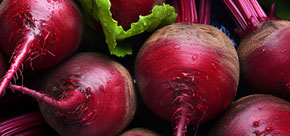Fresh Produce Standards
Download Fresh Produce Standards Manual
Download Fresh Produce Standards Manual – Including GLOBALG.A.P Module
Download the changes to the Fresh Produce Standards from 1 February 2025
Download watercress protocol
Download hops protocol
Useful Documents
UK Crops grown and risk categories
Fresh Produce assessment structure
TRACEABILITY AND ASSURANCE Version 5.1
Click to view
Key – Those standards which have greater significance (all other standards are normal)
Recommendation – Those which do not affect certification
New – A completely new standard which the member must now adhere to
Revised – A standard that has changed and requires the member to take some different or additional action to before
Upgraded – The standard has been upgraded to a Key standard or from a Recommendation to a full standard
Appendix – Referenced in ‘How you will be measured’. Indicates that additional information is provided in the Appendices, which are available at the end of each section.
Cropping Categories Fresh Produce
Category 0 - Those you can eat raw and have a significant risk or history of pathogen contamination
Category 1 - Those you can eat raw and which do not have a protective skin that is removed before eating; they may also have a significant risk or history of pathogen contamination.
Category 2 - Those you can eat raw and which either have protective skin or grow clear of the ground, or that have no history of pathogen contamination.
Category 3 - Those that the customer always cooks.
An up-to-date list of the crop categories can be found on the Red Tractor website.
PR.TI.1 Key
Systems must be in place that deliver traceability of product throughout the operation.
How you will be measured
PR.TI.1.a
PR.TI.1.b
PR.TI.1.c
Traceability records
PR.TI.2
Records of bought-in seeds or plants must be kept. (REVISED)
How you will be measured
PR.TI.2.a
PR.TI.2.b
PR.TI.2.c
- Seed/ plant traceability records
- Quality control information
- Pest and disease monitoring records
- Microbiological testing certificates
PR.TI.3
Systems must be tested annually to ensure the traceability system is effective.
How you will be measured
PR.TI.3.a
PR.TI.3.b
PR.TI.3.c
- Product recall test records
- Mass balance calculations
- Red Tractor Checker service to complete assurance checks on other farms, hauliers and markets:
https://checkers.redtractor.org.uk/rtassurance/services.eb
More Standards
Download Fresh Produce Standards Manual
Download Fresh Produce Standards Manual – Including GLOBALG.A.P Module
Download the changes to the Fresh Produce Standards from 1 February 2025
Download watercress protocol
Download hops protocol
Useful Documents
UK Crops grown and risk categories
Fresh Produce assessment structure
- TI.2 – Microbiological test results may be provided by the seed supplier or the farm/business can organise its own testing through an accredited laboratory
- TI.3 – Farms shall ensure that a product recall test and mass balance calculation are completed in advance of a Red Tractor assessment. The assessment itself does not represent the annual test required by the standard.
